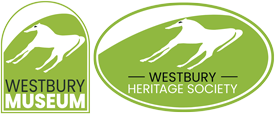White Horse.
The image of the white horse carved into the chalk below Bratton Castle is visible for miles around, but its true origins are unknown. It is also one of the best situated, being high on a very steep slope and overlooking a marvellous panoramic view.
Local legend tells that it commemorates the Battle of Ethandun in 878 when King Alfred the Great defeated the Danes.
It is known that the present outline was formed in 1778 and replaced an earlier, cruder, version which faced the opposite way. The new carving was carried out on the orders of Mr Gee and may have been to provide a more aesthetic view for the owner of Heywood House. Cut into the chalk, the horse originally had to be scoured regularly to keep it white. The last recorded scouring took place in 1853 but in the late 1950s, the horse was “preserved” by covering it in white-painted concrete which was repeated in 1995.
The earliest reference to the horse comes in the early eighteenth century and may support the other theory for its origin; that it was created to show loyalty to the Hanoverian succession – a white horse being the symbol of the House of Hanover.
Next to the White Horse is Bratton Camp. The earthwork defences of an Iron Age fort were built at Bratton Camp over 2,000 years ago.

